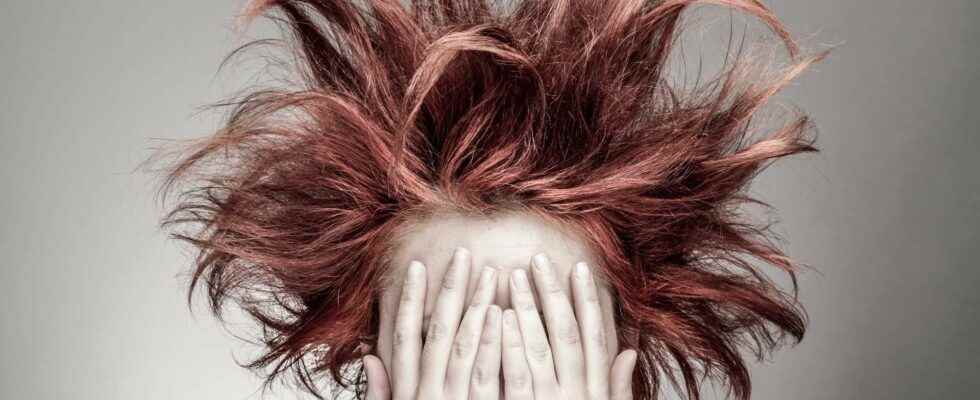You will also be interested
[EN VIDÉO] Stress accelerates the appearance of white hair Also called Marie-Antoinette syndrome, the appearance of white hair due to stress is favored by the disappearance of melanocyte stem cells.
In 1978, a two-year-old Ashkenazi Jewish boy was the focus of pediatricians at a Tel Aviv hospital. Finally it is rather his hair that intrigues them because apart from that, the child is completely normal. Her hair, very light blonde with a strange glow, is dry, thick, fleecy and simply impossible to comb. The parents were not alerted to their son’s hair situation; they too had the same hair when they were little.
The hair of the boy are the subject of an analysis electronic microscope to visualize their structure. It turns out that they are nothing ordinary. They are traversed by one or two vertical grooves which modify their shape. Rather than round or oval, they are triangular or bean-shaped.
At the same time, on the other side of the Mediterranean, André Dupré and his colleagues, French doctors, made the same observation. A family in which three children have indomitable hair. The mother and father say they had the same before it disappeared over the years. Doctors decide to name this strange condition for the first time: uncombable hair syndrome or pili trianguli and canaliculi.
We’ve all had bad hair day », days when our hair rebels and resists our efforts to tame it. More than a reluctant cob or sticky bangs, it’s all the hair of people with uncombable hair syndrome that refuses to be combed. At the time the disease was first named, its origin was unknown, but the fact that entire families were affected still gave doctors a clue. Unmanageable hair syndrome seems to have roots in the Genoa.
Uncombable hair, a matter of genetics
We will have to wait until 2016 to know the end of the story. German researchers are undertaking a study genetic on 11 patients with rebellious manes. The first family taking part in the study is English, two children with normal hair and two others who appear to have uncombable hair syndrome. The analysis of their genomemore precisely of the PAD13 gene located on the chromosome 1 puts light a nonsense mutation in the latter. It is present on both versions of the gene.
Genetic analysis of other patients confirms that a mutation in PAD13 is indeed the cause of uncombable hair syndrome, as are a mutation in TGM3 and TCHH. These three genes code for proteins homonymous: PAD13 and TGM3 are enzymes and TCHH, a structural protein, target of the first two. All three are involved in the formation of the hair shaft. The mystery of unmanageable hair is solved.
As the disease goes away on its own in adulthood – most patients are between 3 months and 12 years old – and does not cause other health problems, there is no treatment for it. the diagnostic is based on confirmation of the abnormal shape of several hairs, visible under an electron microscope, along with other tests to rule out any other disease that affects the appearance of the hair. There’s not much you can do to tame unmanageable hair, gentle products can help, but patience is the best medicine.
Interested in what you just read?
